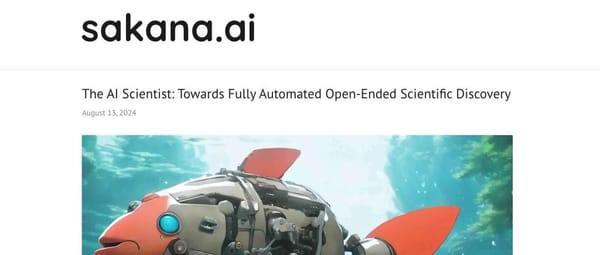10,000-Word Deep Dive into the AI Paradox: Exposing the Biggest Lie of the AI Era

📖 Table of Contents
- The Eve of a Paradigm Shift
- Lifting the Veil: The True Nature of LLMs
- The Mathematics of Unreliability: The pⁿ Dilemma
- Comfort Zone Theory: The Imaginary Curve
- Known Unknown vs. Unknown Unknown
- Countering Unreliability with Systems
- The Missing Intelligence: LLMs Are Not AGI
- The Missing Responsibility: Why AI Doesn't Care
- Building AI Collaboration Systems: Three Principles
- Future Outlook: Role Transformation
---
🚨 The Myth of “No-Code” AI Development
> "You don’t need to know programming to develop software with AI" may be the biggest lie of the current AI era.
Vibe Coding doesn’t magically let non‑programmers create software. In reality, it demands an even deeper understanding of software development—but shifts your role from “coder” to “client.”
---
1. The Eve of a Paradigm Shift
The phrase Vibe Coding exploded in 2024:
- Social media demo videos showing apps built from simple descriptions.
- Product managers creating SaaS in Cursor without coding.
- Founders claiming AI helped them solo projects that once needed teams.
The Hype:
The idea that programming barriers have vanished and any spoken requirement can be turned into an app.
The Reality:
Moderately complex projects reveal AI's shortcomings:
- Bugs in previously working code.
- Misunderstood requirements despite repetition.
- Tiny changes triggering catastrophic cascades.
Two root causes:
- Unrealistic expectations—AI is not an omnipotent senior engineer; all current LLMs are inherently unreliable.
- Cherry‑picked demos—Online “miracle builds” hide complexity and fragility.
---
2. Lifting the Veil: The True Nature of LLMs
Key Question: What exactly is an LLM?
AI Is Not a "God"
It appears all‑knowing and all‑capable—coding, art, analysis. But deeper usage, especially in areas where you're an expert, exposes errors.
Probabilistic Prediction
LLMs fundamentally:
- Segment input into tokens.
- Predict the next likely token given the sequence—based on patterns from training data.
- They do not think or understand; they calculate statistical likelihoods.
Example loop:
[我 爱你] → pick 中国
[我 爱你 中国] → pick 亲爱的
...---
Improving Accuracy:
Feed more effective information:
- Detailed descriptions.
- Relevant context (stack, standards).
- Clear constraints.
---
Platforms like AiToEarn show how structured systems + LLMs can reduce unreliability. They connect AI generation, publishing, analytics, and model ranking across many platforms.
---
3. The Mathematics of Unreliability: The pⁿ Dilemma
Definition:
If AI success per step is p, for n steps: overall success = pⁿ.
- p = 0.95, n = 10 → ≈ 60% success
- p = 0.95, n = 50 → ≈ 8% success
Implication: Complex, multi‑step tasks crash reliability exponentially.
---
Mitigation:
- Reduce n: let AI handle fewer steps; use humans/deterministic tools for others.
- Break tasks into verifiable units.
- Design fault‑tolerant workflows.
---
4. Comfort Zone Theory: The Imaginary Curve
Concept: Relation between effective information length vs. output quality resembles a bell‑like curve.
Sections:
- Rising Phase: Add details → improves results.
- Stable “Comfort Zone”: Sufficient details → peak accuracy/reliability.
- Declining Phase: Overload context → accuracy drops.
Tools for Rising Phase:
- Q&A Requirement Refinement (AWS Kiro, Spec Kit).
- Automatic context supplementation.
Addressing Decline Phase:
- Context compression—extract essentials, remove noise.
- MultiAgent delegation—main agent offloads discreet tasks to sub‑agents.
---
5. Known Unknown vs. Unknown Unknown
Human Error: Hierarchical skills → predictable, thus controllable errors.
AI Error: Flat skills → unpredictable errors.
- Can solve Olympiad problems but fail basic arithmetic.
- Mistakes have no clear boundaries.
Outcome: AI unreliability is currently uncontrollable.
---
6. Countering Unreliability with Systems
Principle: Accept unreliability, design systems for fault tolerance.
Examples:
- Aircraft: redundancy, sensors, damage tolerance.
- Dev Teams: reviews, layered testing, CI/CD pipelines, documentation, cross‑training.
Challenge With AI: Errors are unknown unknowns—hard to target with checks.
---
7. The Missing Intelligence: LLM ≠ AGI
True Intelligence Traits:
- Self‑Correction—internal judgment of success/failure and adjustment.
- Self‑Improvement—capability grows via experience.
LLMs lack both, operating as fixed “encyclopedias” without feedback loops.
Even crows and monkeys exhibit more genuine intelligence traits.
---
8. The Missing Responsibility: Why AI Doesn't Care
Human responsibility stems from awareness of consequences—linked to personal goals.
AI: No goals, no intrinsic drive—must be externally “driven” via system design.
Even AI Alignment (RLHF) trains behavioral patterns, not true responsibility.
Paradigm Shift: Keep accountability human; treat AI as a powerful but indifferent collaborator.
---
9. Building AI Collaboration Systems: Three Principles
- Determinism First
- Use deterministic tools/programs whenever possible.
- Let AI assist tool creation but solidify and reuse proven processes.
- Reduce Possibility Space
- Constrain prompts; remove needless options.
- Incremental, Progressive Output
- Break tasks into stages with human acceptance.
- Preserve reusable artifacts (requirements, designs, tests).
---
10. Future Outlook: Role Transformation
Engineering will shift from coding to prompt/document design, requiring stronger:
- Requirement comprehension.
- Structured expression.
- System architecture skills.
- Acceptance criteria definition.
- Context engineering.
Jobs won’t vanish, but inefficiency will be eliminated. Demand for engineers may grow, with roles evolving toward designing + managing AI‑driven systems.
---
🔍 Final Takeaways
- AI is inherently probabilistic — mathematical limits remain.
- pⁿ dilemma is unavoidable; mitigate via workflow design.
- Keep responsibility human; architect systems that tolerate AI errors.
- Evolve skills toward structured communication and system design.
---
Further Reading / Tools:
---




